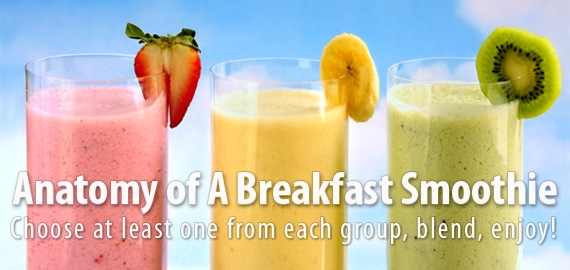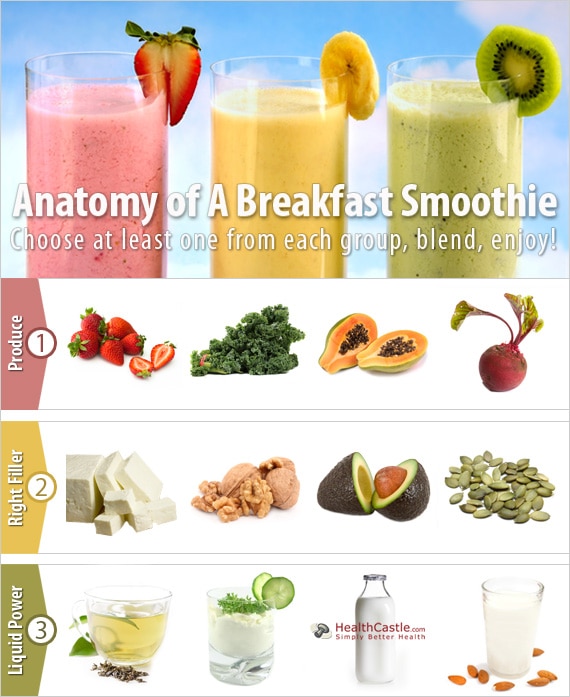
Written By: Sofia Layarda, MPH
Title: Master of Public Health
Alumni: University of California, Berkeley
Last Updated on:


What’s not to like about a smoothie? It’s a quick, easy way to get sustenance into busy parents and kids before rushing off in the morning. We’ve found it to be a refreshing change of pace from the usual breakfast rotation. And, everyone seems to get a kick out of deciding what portion of which ingredients they wish to add. We use a hand blender that comes with a deep mixing cup so you can see the ingredients as you add them in. However, a food processor or regular blender will work just as well.
Whether you are new to the world of smoothies or already enjoy them regularly, here are some easy possibilities to get you started:

Table of Contents
1. Start with Produce
If you’ve got little (or big) people in your house who embrace the “no” policy to fruits or vegetables, a smoothie is a no-fuss way to get some fruit or vegetable servings in to start the day off right. The possibilities are endless. Our smoothie staples include:
2. Add the right fillers
I like adding some carbohydrate, protein, or fat sources to the smoothie to give it some “body” and keep me feeling full a little longer. Some ideas:
3. Liquid power
If you want the smoothie to be a bit runny for ease of drinking, here are some liquids other than water you can use:
You may wonder why fruit juice isn’t on the list. We don’t really see the need for fruit juice, since you are already using fresh fruits in the smoothie.
Now that you know what the components are, what kind of portions are we looking at? Generally, for one person, I would use approximately:
Don’t go overboard on the portions. Remember that this is intended to be a quick breakfast on the go (clocking in around 200-300 kcal), not a full-on meal replacement loaded with hundreds of extra calories you may not need.
Alumni: University of California, Berkeley – Sofia believes in bringing back fun and pleasure into everyday eating. She loves cooking, and is constantly experimenting with ingredients, creating recipes and trying them out on family and friends. Her latest interest lies in finding realistic and practical ways of environmentally-friendly food/eating habits.
breakfast, dairy, fruits, green tea, healthy snacks, kid's nutrition, milk, nuts, seeds, smoothies, tofu, vegetables, yogurt